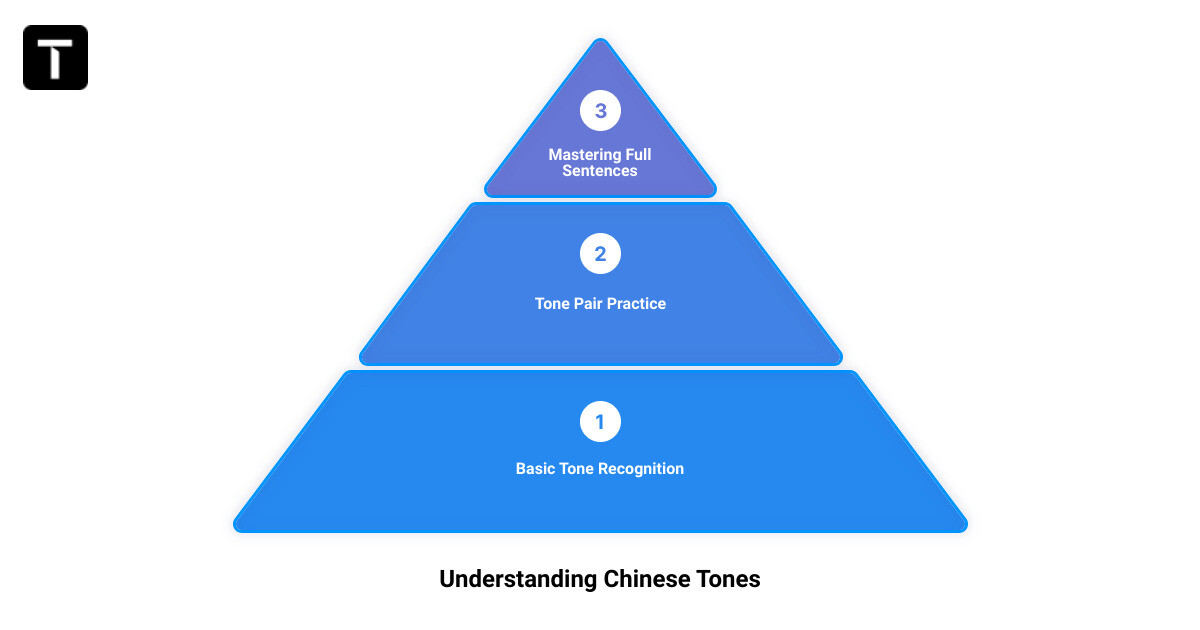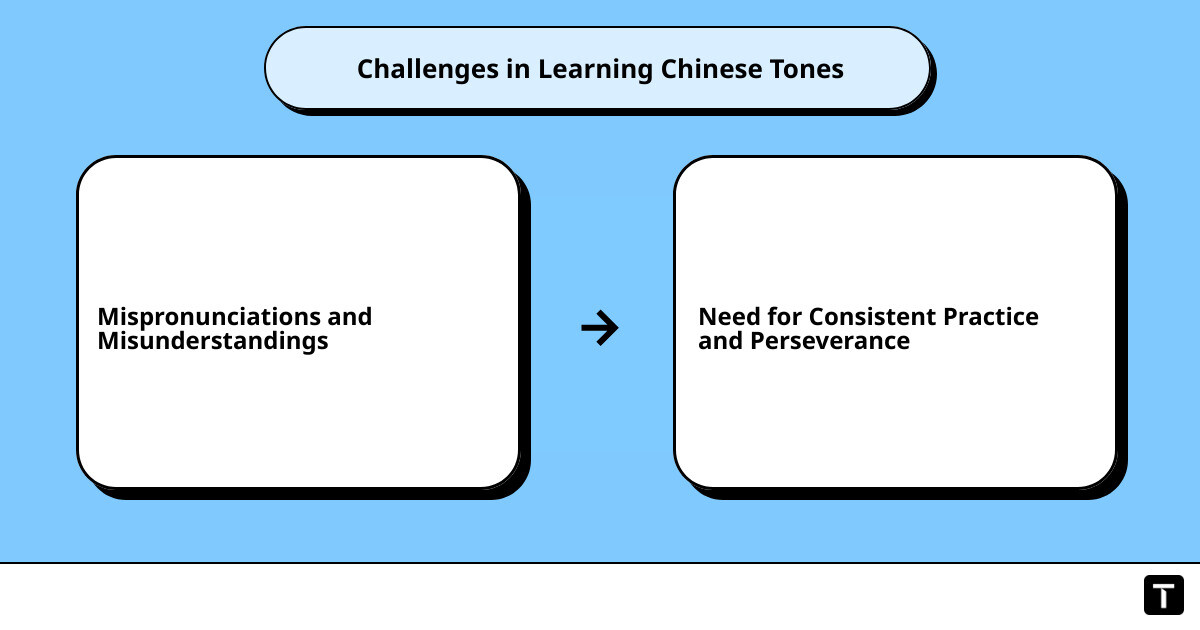Introduction: The Importance of Mastering Chinese Tones
Imagine yourself navigating the bustling streets of Beijing, Shanghai, or any Chinese-speaking city. You've studied Mandarin diligently and you're ready to put your skills to the test. Yet, as you begin to speak, you notice puzzled looks from the locals. The reason? You've neglected the importance of mastering Chinese tones, a crucial component of Mandarin.
While Mandarin Chinese may seem like a symphony of sounds with its unique tonal system, it's not as daunting as it seems. However, understanding and mastering these tones is vital for effective communication in the language. Over half the world's languages, including Mandarin, utilise tone to distinguish words. Hence, a slight change in tone can alter the entire meaning of a word, leading to surprising, and sometimes embarrassing, miscommunications.
The importance of tones in Mandarin Chinese can't be overstated. If you overlook them, you'll end up mispronouncing every single word. For example, you might think you're complimenting someone's cooking when, in fact, you're inadvertently swearing at them! Therefore, to avoid such faux pas and to truly immerse yourself in the language and culture, mastering Chinese tones should be a top priority from the get-go.
Whether you're learning Mandarin for business, travel, or personal enrichment, developing a strong foundation in Chinese tones is essential. It'll open doors to better listening comprehension, improved pronunciation, and ultimately, a more profound understanding of the Chinese language.
On your language journey, you'll find that the 'strange' quickly becomes your new normal. You'll discover a range of fascinating techniques to master Chinese tones, from mimicking native speakers to utilising online resources and engaging in real-life conversations. Fear not, this guide will provide you with the essential tools you need to conquer Mandarin tones. So, get ready to dive into the world of Chinese tones and transform your Mandarin language skills.

Understanding the Basics of Chinese Tones
Imagine navigating through a dense forest without a compass. That's how Mandarin can feel when you neglect the significance of tones. To step into the realm of fluency, you need to comprehend the essence of Chinese tones. Let's delve into it!
The Five Tones in Mandarin Chinese
Mandarin Chinese has a total of five tones, four of which are the basic tones, and the fifth being a neutral tone. Think of these tones as distinct musical notes that change the meaning of a word.
The first tone (ˉ) is high and steady, like a musical note held constant.
The second tone (/) starts low and ends high, similar to the inflection when you ask a question in English.
The third tone (V) is the falling-rising tone, where your voice starts low, goes even lower, and then rises a bit.
The fourth tone (\) starts high and falls sharply, akin to a stern "No!" in English.
Lastly, the neutral tone (.) is short and succinct, like a musical staccato. It's an unstressed syllable that doesn't have an inherent tone of its own. Instead, it borrows its tone from the preceding syllable or intonation.
The Role of Tones in Mandarin Chinese
The role of tones in Mandarin is pivotal. They are not merely about adding a melodious touch to your speech. Instead, they hold the key to comprehension. Just as in English changing a vowel can transform "bed" into "bad", in Chinese, a shift in tone can morph "mǎ" (horse) into "mā" (mother).
The Chinese language thrives on context. In predictable situations like ordering from a café menu, incorrect tones may not matter much. But in less predictable scenarios, like directing a taxi driver to an obscure address, even a single incorrect tone can lead to complete misunderstanding. Therefore, the importance of tones is inversely proportional to the predictability of what you say. The less predictable your speech, the more important correct tonal pronunciation becomes.
In a nutshell, tones are as integral to Mandarin as vowels are to English. They're not optional embellishments, but essential elements defining the meaning of words. So, don't just focus on what you say, pay attention to how you say it too!
Techniques to Master Chinese Tones
Learning Mandarin is akin to learning a musical instrument; you need to train your ears to hear the right notes (tones in the case of Mandarin) and then train your mouth to produce them. While it may seem daunting, there are a number of techniques that can guide you to conquer the peaks and valleys of Mandarin tones.
Mimicking Native Speakers for Tone Mastery
Ever found yourself inadvertently adopting the accent of a person you’ve spent a lot of time with? The principle behind this natural occurrence can be applied to mastering Chinese tones as well. By listening to and repeating after native Mandarin speakers, you can train your ear to recognize tonal variations and your mouth to replicate them. This technique, known as "shadowing", is a tried and true method to improve your pronunciation.
Using Short Phrases to Practice Tones
When you're first starting to learn Chinese, it can be helpful to practice short phrases rather than individual words. This allows you to get a feel for the rhythm and musicality of the language. Remember to start slow and gradually increase your speed once you're comfortable with the tones.
Recording and Reviewing Your Own Speech
One of the best ways to improve your Mandarin tones is to record yourself speaking and then listen back to it. This will help you become aware of your own pronunciation errors. As you listen, compare your pronunciation with that of native speakers. If there's a discrepancy, try again. Remember, accurate self-correction is a crucial skill in language learning.
Utilizing Online Resources for Tone Practice
In the digital age, a wealth of resources is available at your fingertips. Language exchange apps like HelloTalk and Tandem, or online tutoring platforms like italki, offer opportunities to practice with native speakers. Additionally, platforms like FluentU provide valuable tone practice exercises. Make good use of these tools to refine your pronunciation.
Engaging in Conversations with Native Speakers
While online resources are great, nothing quite matches the experience of conversing with a native Mandarin speaker. This allows for real-time feedback and correction, helping you improve your pronunciation and listening skills. It also gives you the chance to practice understanding and responding to various tones in a fluid conversation.
Mastering Mandarin tones is a marathon, not a sprint. It requires consistent practice and a willingness to make and learn from mistakes. With these techniques in your toolkit, you're well-equipped to make progress on this musical journey of Mandarin language learning.
How Traverse and Mandarin Blueprint Can Help You Master Chinese Tones
In the marathon to mastering Mandarin tones, you're not alone. Innovative learning platforms like Traverse and Mandarin Blueprint are your supportive coaches, guiding you through the challenging terrains of tonal learning.
The Benefits of Using Traverse for Learning Chinese Tones
Traverse employs a science-backed learning approach that can make your Mandarin tone practice more effective and engaging. It uses spaced repetition flashcards, a proven technique for long-term retention, allowing you to review and practice tone pairs regularly. This enhances your recognition of tones and significantly improves your pronunciation. What's more, Traverse gives you the option to slow down audio resources, an especially beneficial feature that allows you to better identify and repeat tones out loud.
How Mandarin Blueprint Complements Traverse in Tone Learning
On the other hand, Mandarin Blueprint offers a structured, immersion-based learning experience. It covers critical aspects of Mandarin learning such as initial consonants, simple and compound vowels, spelling rules for syllables, and tone changes. By understanding tones in the context of conversation and seeing how their meaning can shift in different contexts, your overall understanding and usage of Mandarin tones are enhanced.
The combination of these two platforms equips you with a comprehensive toolkit for mastering Mandarin tones. The blend of consistent practice, science-based learning techniques, and immersive language learning paves the way for a smoother, more effective Mandarin learning journey.
Importing Anki Decks for Continued Learning on Traverse
Beyond its own features, Traverse also allows you to incorporate external resources into your learning, like importing Anki decks. Anki is a popular flashcard tool among language learners, and you can bring in decks specifically designed for practicing Chinese tones. This feature makes Traverse a flexible and customizable platform, adapting to your personal learning style and requirements.
By harnessing the power of these platforms, you are turning the marathon of mastering Mandarin tones into an enjoyable and rewarding journey. Remember, every step you take brings you closer to your goal of sounding like a native Mandarin speaker. So, keep moving forward and immerse yourself in the captivating world of Mandarin Chinese. You're doing great!
Practical Tips to Improve Your Chinese Tones
As you continue your journey to master Mandarin tones, keep in mind that success is a blend of effective strategies, consistent practice, and immersion. Here are some practical, engaging, and fun ways to improve your command of Chinese tones.
Listening to Chinese Music and Watching Chinese Movies
The allure of Chinese music and film extends beyond entertainment. They are excellent resources for honing your tonal recognition and pronunciation skills. Songs often highlight the melody of a language, making tones easier to distinguish. By singing along, you're not just having fun but also practicing your pronunciation in the most melodious way possible.
Similarly, movies provide a real-life context for language use. By watching Chinese films, you get to hear tones as they are naturally used in conversation, which is far more effective than memorizing tone rules in isolation. And who knows, you might even pick up a few colloquial expressions along the way!
Practicing Tone Pairs and Tone Drills
While it's essential to understand the individual tones, Mandarin tones are rarely used in isolation. They often appear in pairs, and the tone of one syllable can influence the tone of the next. Practicing tone pairs is a powerful way to familiarize yourself with this tonal interaction.
Tone drills, on the other hand, are exercises designed to reinforce your ability to produce each tone accurately. You can start with single syllable drills, then progress to two-syllable or multi-syllable drills as your proficiency increases.
Remember, it's not about speed, but accuracy. Slow down if you need to and gradually build up speed as your confidence grows. As the saying goes, "Slowly but surely wins the race".
Incorporating Tones into Daily Life
The key to mastering any new skill is making it part of your daily routine. Try incorporating Mandarin tones into your everyday life. Label objects around your house with their Mandarin names and the corresponding tone marks. Whenever you see the label, say the word out loud, emphasizing the correct tone.
Alternatively, you could practice your tones during downtime, such as while cooking or commuting. The key is consistency – the more you practice, the more natural your tone production will become.
These practical tips, when combined with other learning strategies, will significantly improve your command of Chinese tones. Remember, mastering Mandarin tones is not a sprint, but a marathon – take it one step at a time and enjoy the journey. You're doing great!

Overcoming Challenges in Learning Chinese Tones
Mastering Chinese tones can seem like you're trying to solve a complex puzzle. But don't worry, every puzzle has a solution. With the right strategies, tools, and a bit of patience, you can overcome these challenges and decode the intricate tapestry of Chinese language variations.
Dealing with Mispronunciations and Misunderstandings
One of the most common challenges in learning Chinese tones is dealing with mispronunciations and misunderstandings. This is especially true when you're just starting out and your pronunciation of tones may not yet be accurate. A misplaced tone can change the meaning of a word entirely – a fact that can lead to some confusing, and even embarrassing, conversations.
But don't let this discourage you. Remember that Chinese speakers tend to be extremely forgiving of foreign accents. As mentioned in the source document, there's a large amount of diversity in the way Chinese people pronounce tones, so they're used to hearing tones that differ from the standard Mandarin. Don't wait until your pronunciation is perfect to start trying. Most Chinese people are happy just to hear a foreigner try to speak their language.
The Importance of Consistent Practice and Perseverance
When it comes to mastering Chinese tones, consistent practice and perseverance are key. It's not enough to understand the tones intellectually – you need to train your ear and your mouth to hear and produce the tones correctly. This requires time, effort, and a lot of repetition.
Don't underestimate the power of listening and repeating. This tried and true method can work wonders in helping you learn to say words in a new language. Practice repeating after native speakers as often as you can. You can also record yourself and compare your speech with that of a native speaker to gauge your progress.
Don’t shy away from exaggeration in the beginning. Use the full range of your voice, get your highs up high and your lows down low. It may seem strange at first, but this method can help you get going in the right direction. Just remember, the neutral tone should be short, quick, and in the middle.
Keep in mind that learning Chinese tones is a marathon, not a sprint. It takes time to develop the necessary skills and habits. Even if progress seems slow, don't lose heart. With consistent practice and perseverance, you will gradually improve and the tones will start to come more naturally.
In the end, the efforts you put into learning Chinese tones will be well worth it. Not only will you be able to communicate more effectively, but you'll also gain a deeper understanding and appreciation of the richness and complexity of the Chinese language. So keep practicing, keep listening, and keep speaking. You're on the right track to mastering Chinese tones!
Conclusion: The Journey to Mastering Chinese Tones
There's an art to mastering Chinese tones, and every art requires dedicated practice and perseverance. Remember, learning is not a destination, but a journey. Every step you take, every tone you nail, and every phrase you utter brings you closer to your goal of mastering Mandarin.
The techniques and resources we've discussed in this article, from mimicking native speakers to utilizing online resources like Traverse and Mandarin Blueprint, can aid you significantly in your learning journey. The convenience of tools like Anki decks and the benefits of immersion through Chinese music and movies can help you polish your tonal accuracy and recognition.
However, the most important tip to remember is to keep practicing. Just as a musician doesn't master an instrument overnight, mastering Chinese tones takes time, patience, and lots of practice. Don't be disheartened by misunderstandings or mispronunciations. In fact, they provide valuable feedback to help you refine your tones.
Chinese speakers are generally extremely forgiving of foreign accents and will appreciate your efforts to learn their language. So don't let the fear of being misunderstood stop you from speaking. Start speaking from day one, and let your pronunciation improve over time.
While Chinese tones may seem daunting initially, with time, patience, and the right techniques and tools, you'll find your fluency improving. So take a deep breath, embrace the challenge, and dive headfirst into the fascinating world of Chinese tones. After all, the journey of a thousand miles begins with a single step - or in this case, a single tone. Happy learning!

